Caribbean cuisine is a tapestry of tastes, a blend of influences from Africa, Europe, and Asia, woven through centuries of history. Each dish tells a story, a narrative of migrations, trade, and the bountiful Caribbean Sea. The food is as diverse as the people, with each island offering its own twist on traditional recipes.
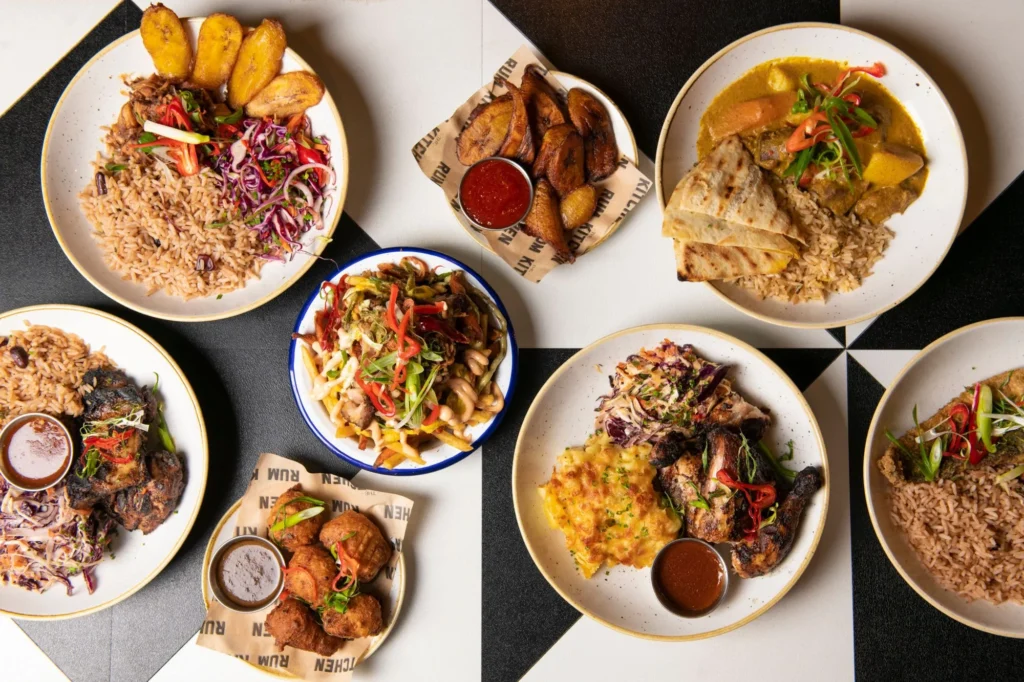
In this journey through Caribbean kitchens, we’ll uncover the secrets behind the spicy jerk seasoning, the comfort found in a bowl of rice and peas, and the sweet satisfaction of tropical desserts. Whether you’re a seasoned foodie or a curious newcomer, the culinary treasures of the Caribbean cuisine dishes await to delight your palate and spice up your meals.
The Caribbean Palate: A Fusion of Flavors
The Caribbean palate is a celebration of flavors, a testament to the region’s rich history and cultural diversity. It’s a cuisine that refuses to be boxed into a single category, instead offering a mosaic of tastes that range from the subtly spiced to the intensely hot.
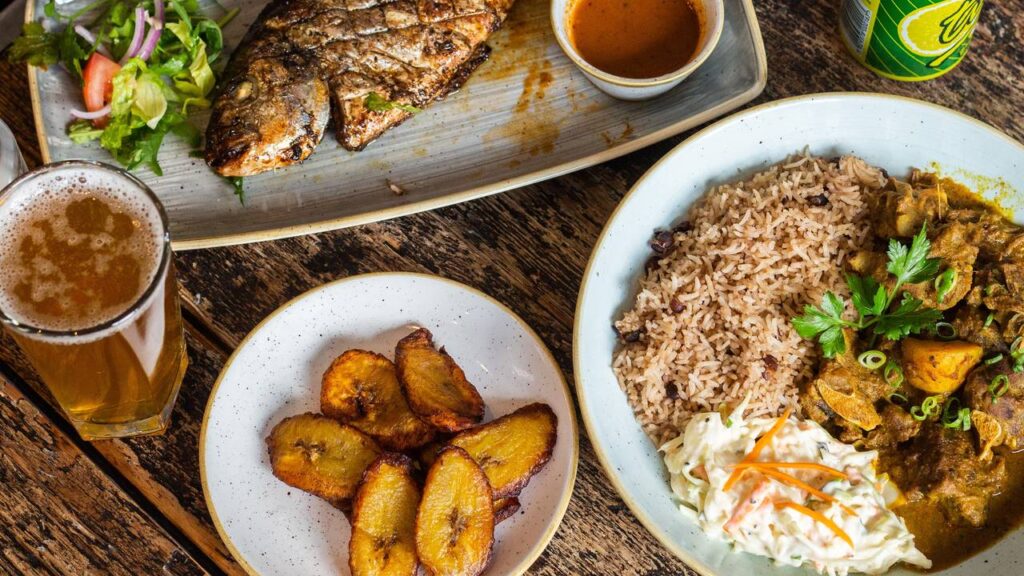
Spice & Soul:
At the heart of Caribbean cooking lies a love for spices. The use of allspice, nutmeg, cinnamon, and cloves, often combined with fresh herbs like thyme and cilantro, creates a flavor profile that is uniquely Caribbean. These spices don’t just add heat; they bring depth and soul to every dish, infusing meals with a warmth that is as much about community and celebration as it is about taste.
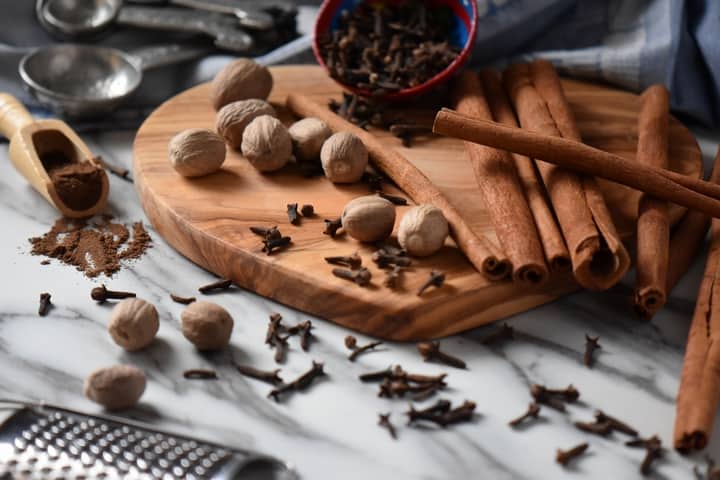
Island Staples:
The staples of Caribbean cuisine are as varied as the islands themselves. Rice is a common denominator, often found alongside beans in the classic rice and peas dish. Plantains, both sweet and savory, are versatile ingredients that appear fried, boiled, or mashed. Beans, too, are a mainstay, providing a hearty base for many meals and a source of protein that complements the vibrant produce and fresh seafood.
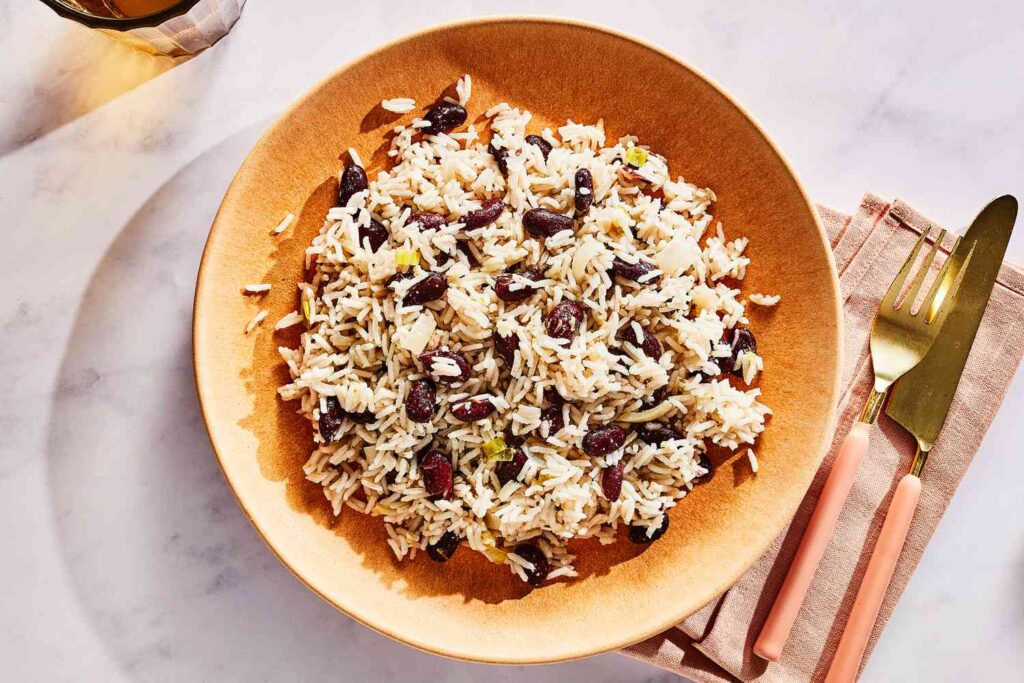
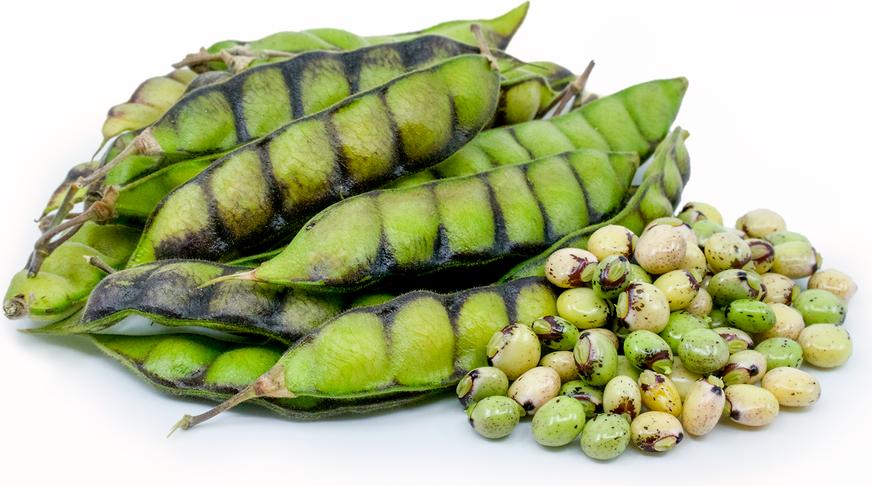
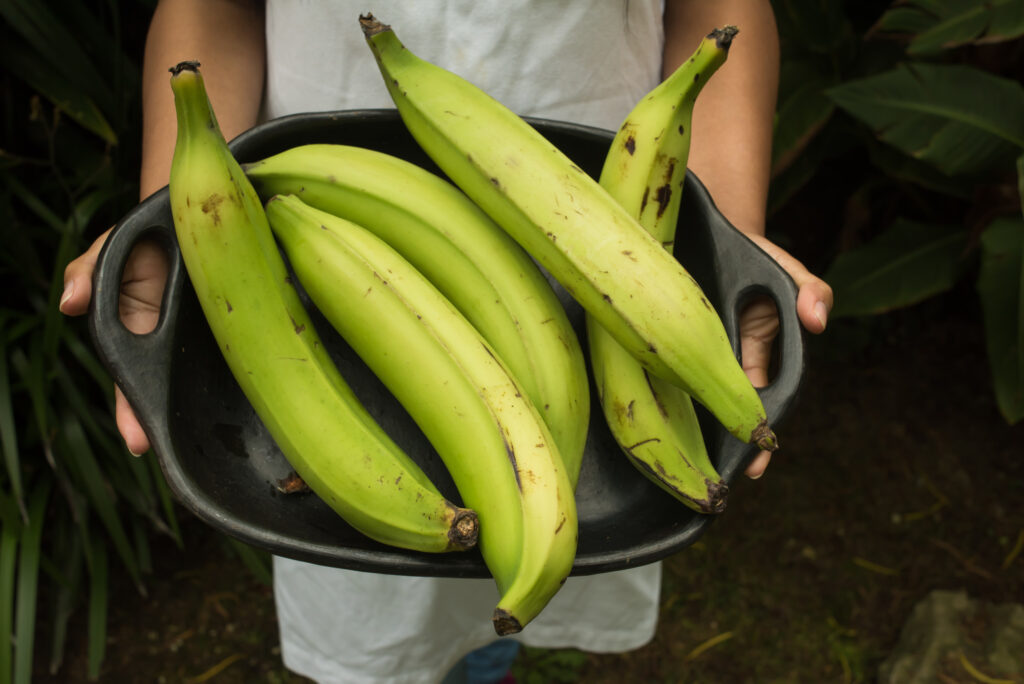
Signature Dishes: The Heart of CARIBBEAN CUISINE DISHES
Caribbean cuisine is not just food; it’s a narrative of the islands’ spirited culture and history, expressed through its signature dishes. Each island has its own set of iconic recipes that tell the tale of its people and their journey through time.
Jerk Delight:
The fiery pride of Jamaica, jerk cooking is a method steeped in tradition. Originating from the Maroons, the escaped African slaves of Jamaica, jerk refers to both the spice mix used to flavor meat and the particular way of slow-cooking it over pimento wood. The result is a tender, smoky dish with a spicy kick that encapsulates the spirit of the island.
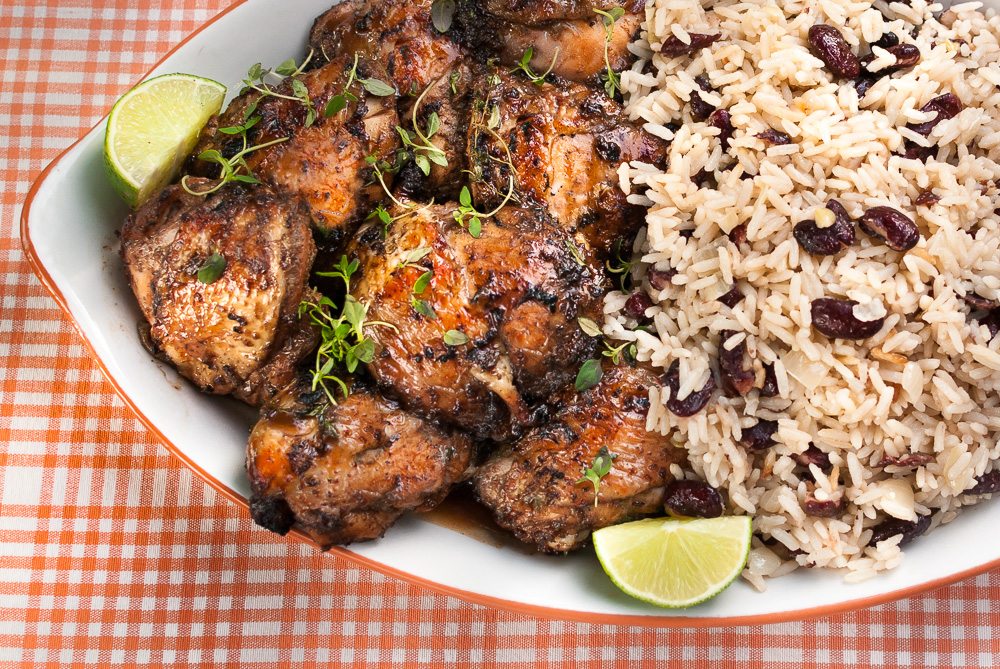
Seafood Sensations:
Surrounded by the sea, the Caribbean offers a bounty of seafood, each island putting its own spin on oceanic harvests. In Barbados, flying fish is paired with coucou, a cornmeal and okra dish, to create a national favorite. The Bahamas are known for their conch fritters, where the mollusk is mixed into a batter and fried to golden perfection. These dishes are not just meals but a connection to the Caribbean Sea that is so central to life here.
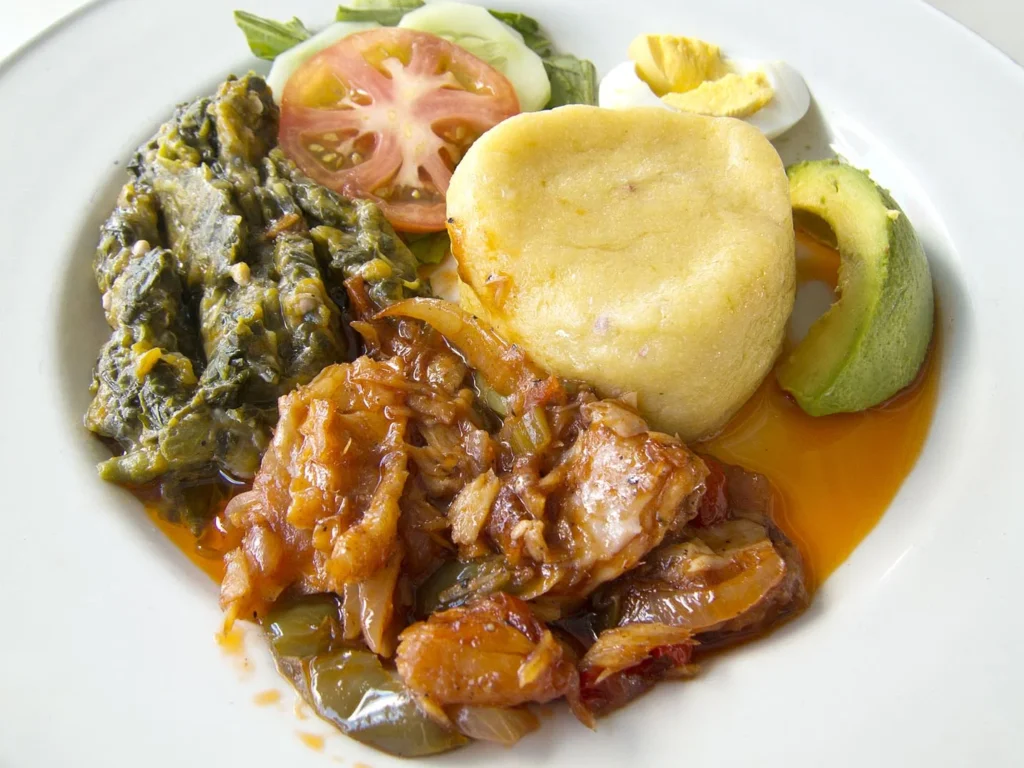
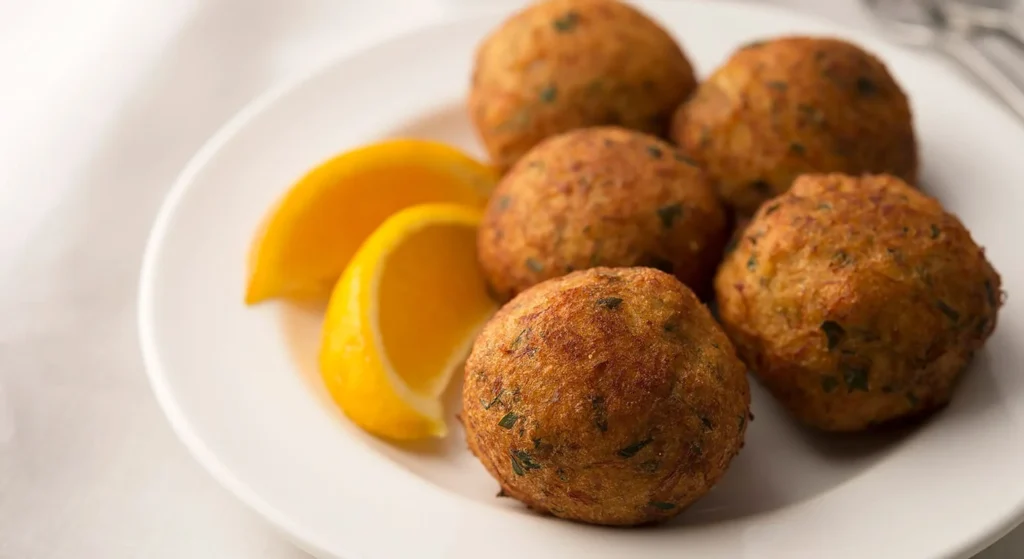

Street Food Scene: The Pulse of Caribbean Flavor
The streets of the Caribbean are a vibrant tapestry of flavors, where the aroma of spices fills the air, and the sizzle of frying pans is the soundtrack. Street food in the Caribbean is not just about sustenance; it’s a cultural experience, a way to connect with the heart of island life.
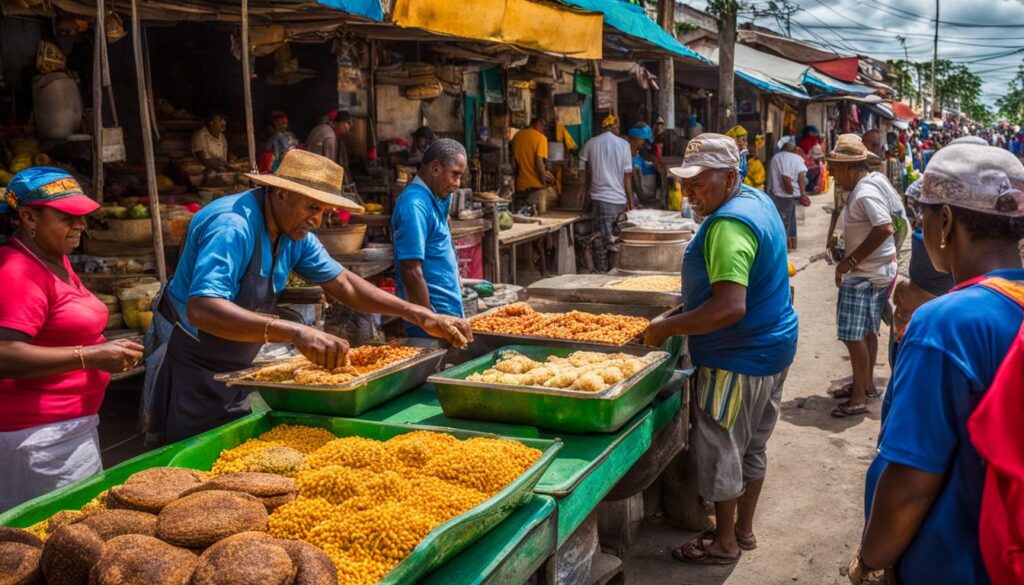
Quick Bites: As you wander the bustling markets and beachfront, you’ll encounter a variety of quick bites that are as delicious as they are convenient. Peppered shrimps in Jamaica are a fiery favorite, seasoned with a spicy kick and cooked to perfection in a skillet with garlic, hot pepper, butter, and thyme. In the Dominican Republic, yaniqueque, a crispy and crunchy fried bread, tempts the taste buds with its simple yet satisfying flavor.
Festival Flavors: The Caribbean’s street food truly shines during festivals and carnivals, where the air is thick with the smell of cooking and the joy of celebration. Jamaican patties, with their flaky crust and savory filling, are a staple at these events, offering a taste of the island’s African and Indian influences. Haitian patties, filled with a variety of meats, are another crowd-pleaser, showcasing the island’s French culinary heritage.
Sweet Treats: The Dessert Delights of the Caribbean
The Caribbean islands are not only known for their savory dishes but also for their delectable desserts. These sweet treats are a testament to the region’s love for vibrant flavors and the natural bounty of tropical fruits.
Tropical Desserts:
The Caribbean offers a plethora of desserts that incorporate the fresh, sweet flavors of the islands’ fruits. One such delight is the rum cake, a dessert that is as indulgent as it is iconic. Infused with the rich taste of Caribbean rum and often studded with dried fruit, it’s a celebratory staple in many Caribbean homes. Another popular dessert is the coconut flan, a creamy concoction that combines the smooth texture of custard with the tropical taste of coconut.


Fruit Fusions:
The use of fruit in Caribbean desserts goes beyond mere flavoring; it’s a celebration of the island’s agricultural heritage. Mangoes, pineapples, and papayas are often used in desserts like tarts, mousses, and sorbets, offering a refreshing end to any meal Banana fritters are another crowd-pleaser, where ripe bananas are mashed and mixed with flour and sugar, then fried to create a sweet and crispy treat.
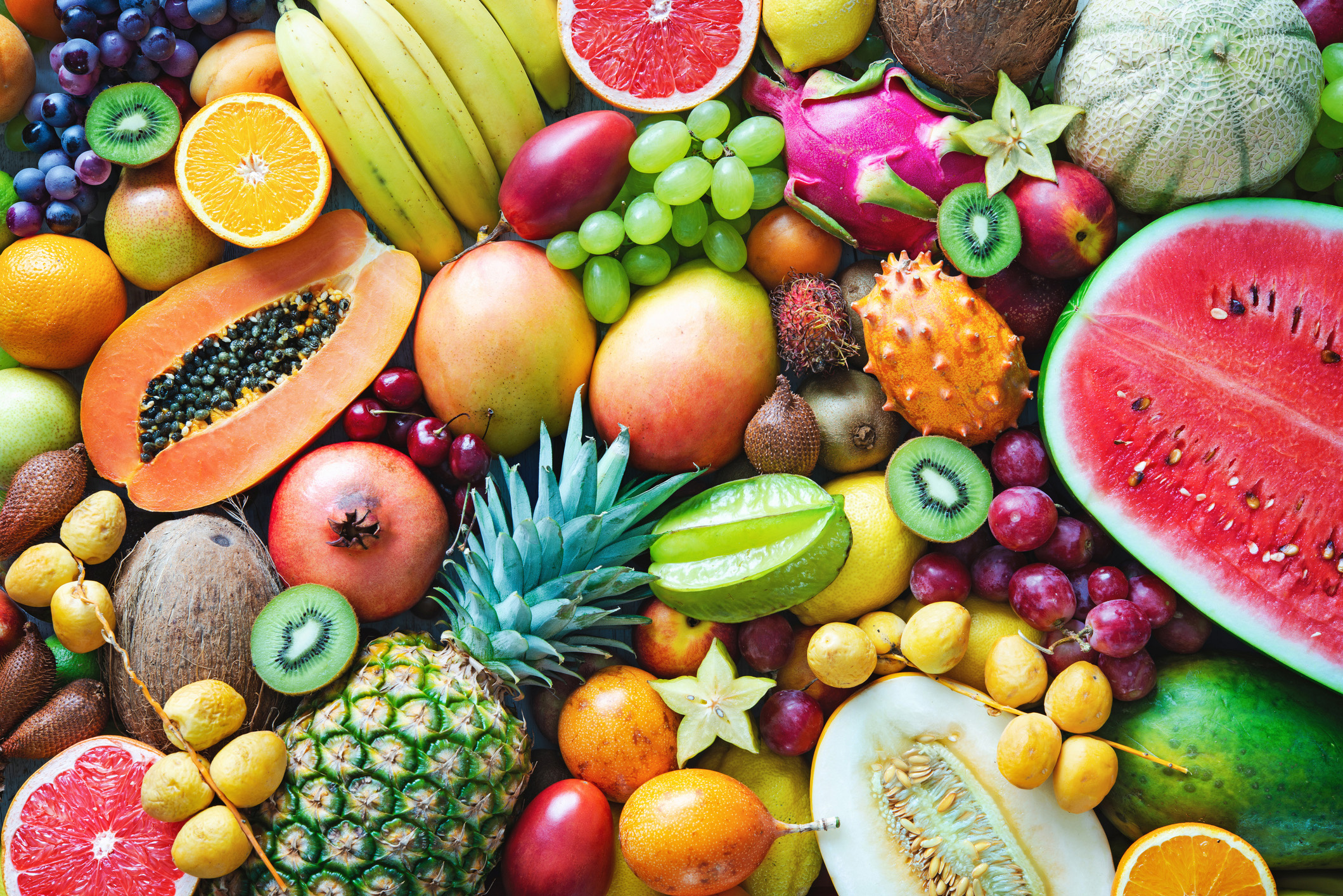
Vegetarian Varieties: Caribbean’s Plant-Based Delights
The Caribbean islands offer a rich variety of vegetarian dishes that are both flavorful and satisfying. Rooted in the region’s diverse cultural influences and abundant natural produce, these dishes provide a plant-based paradise for vegetarians and health-conscious eaters alike.
Meat-Free Marvels:
Vegetarianism in the Caribbean is not just a dietary choice; it’s a way of life for many, especially within the Rastafarian community, where ‘Ital’ food is a philosophy that emphasizes natural and pure eating. Dishes like the hearty Ital stew, brimming with vegetables and legumes in a coconut milk base, embody this ethos. Another staple is the Callaloo, a leafy green stew often made with amaranth leaves, okra, and a mix of spices that offer a nutritious and flavorful meal.
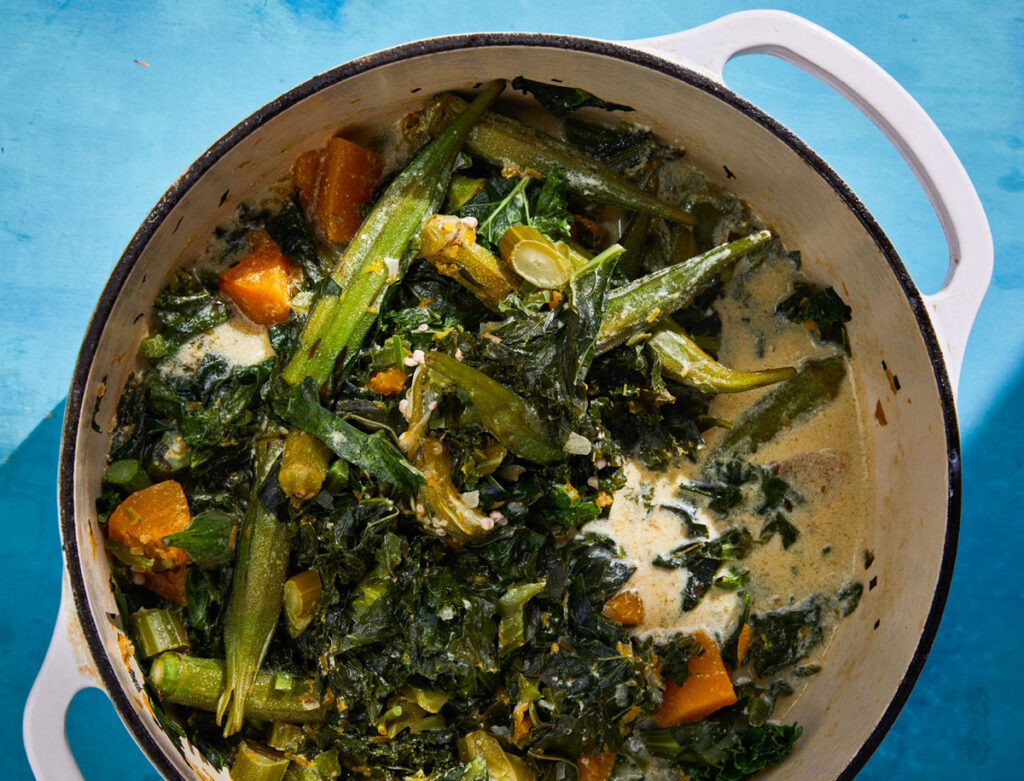
Roots and Tubers:
The Caribbean’s fertile soil yields a variety of roots and tubers that are central to its vegetarian cuisine. Yucca, sweet potatoes, and taro are commonly used in dishes that range from simple boiled preparations to complex stews and curries. These starchy ingredients provide a comforting texture and are adept at absorbing the rich, spicy flavors of Caribbean cooking.
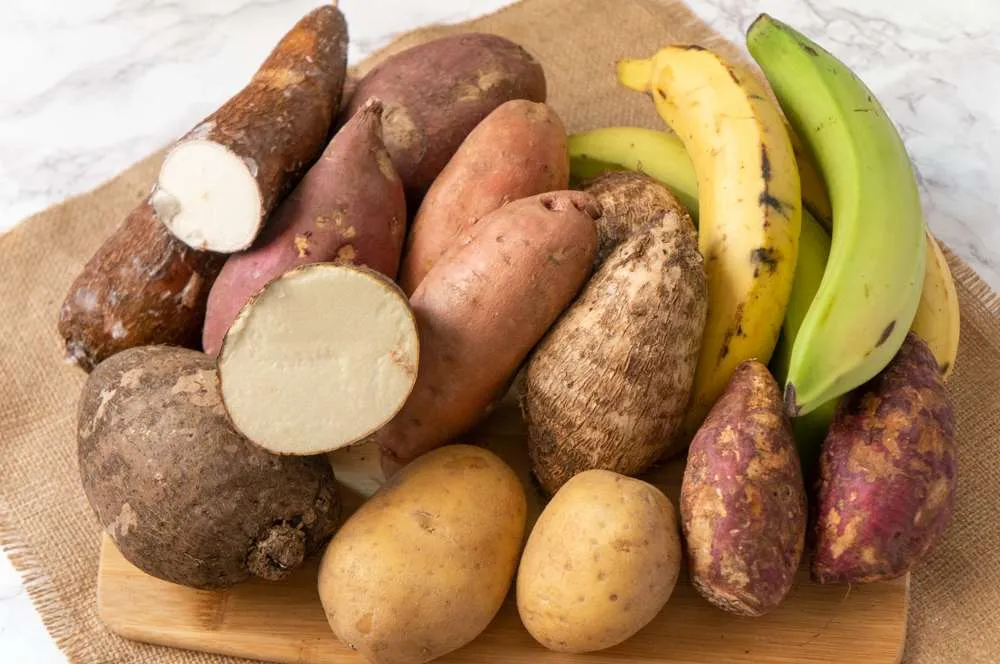
From the vibrant street markets to the quiet, sandy beaches, vegetarian dishes are an integral part of the Caribbean dining experience. They showcase the islands’ ability to turn simple, earth-grown ingredients into a celebration of flavors that can be enjoyed by everyone.
Final Analysis
Caribbean cuisine dishes are a vibrant and dynamic testament to the region’s rich cultural mosaic. It’s a culinary tradition that has evolved through a confluence of various influences, each adding its unique flavor to the pot.
From the indigenous Taino and Arawak tribes to African, European, Indian, and Asian settlers, every wave of migration has left its mark on the food of the Caribbean. The dishes we’ve explored are more than just sustenance; they are a celebration of life and a reflection of the Caribbean’s history, its struggles, and its triumphs.
Whether it’s the fiery jerk seasoning, the refreshing tropical fruits, or the hearty vegetarian stews, each bite tells a story of the island’s spirit and resilience.
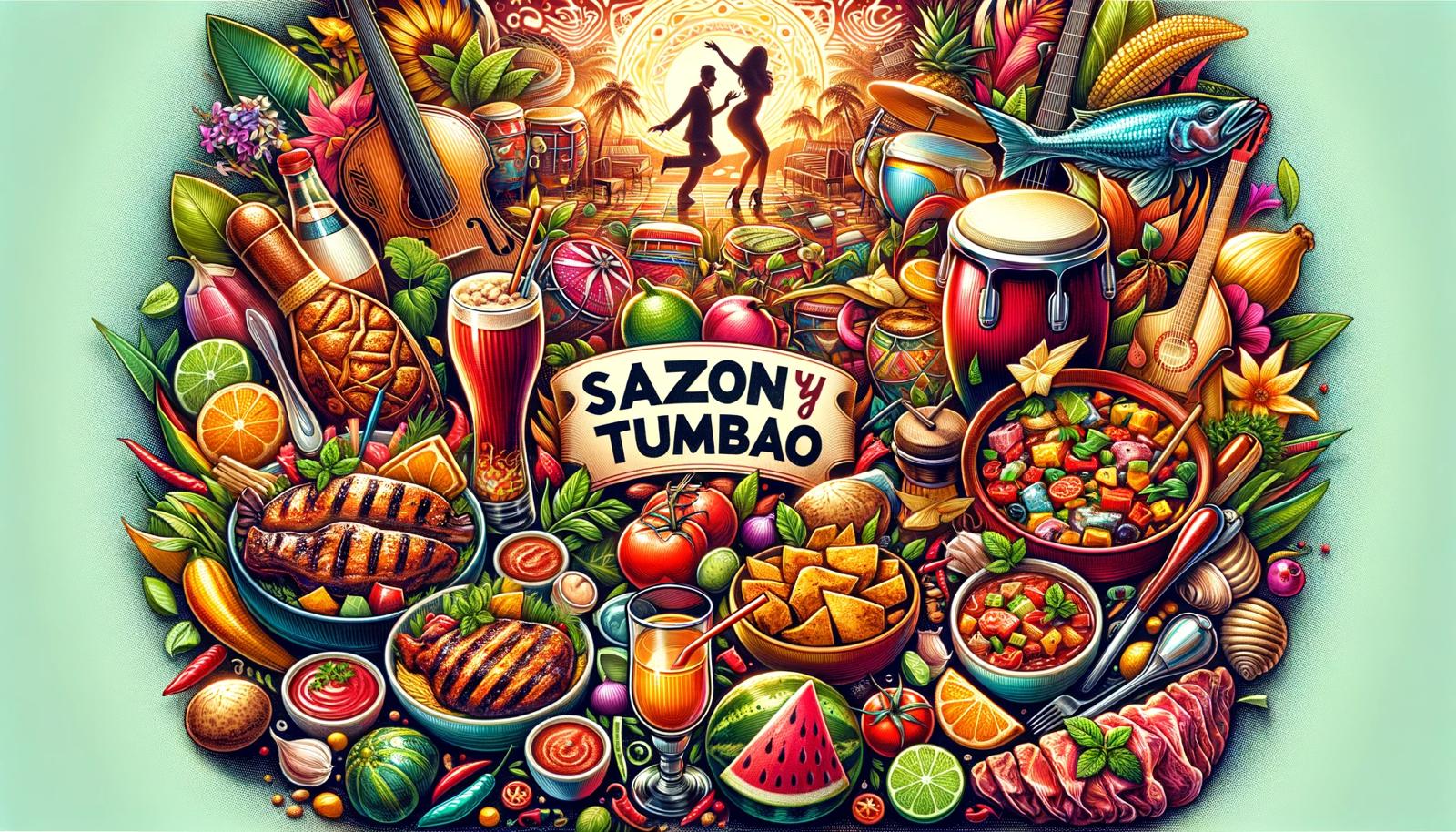

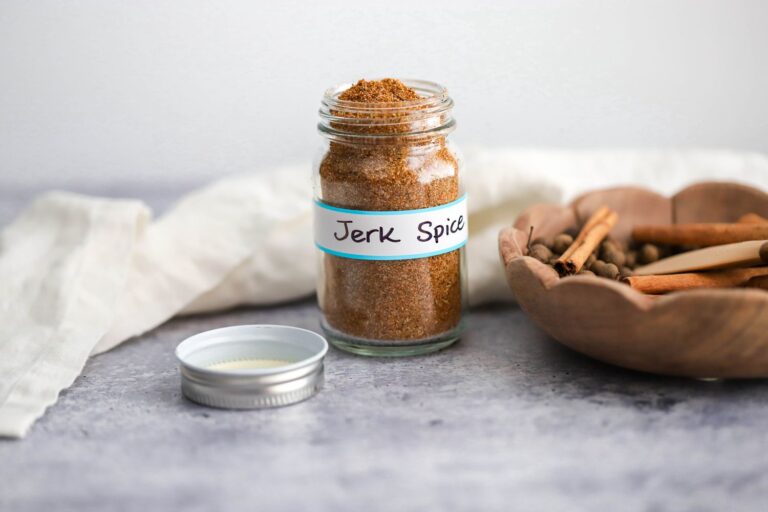
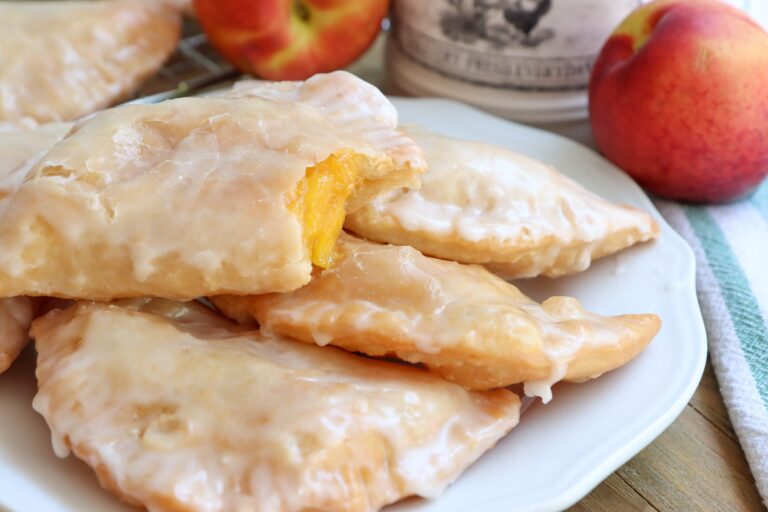


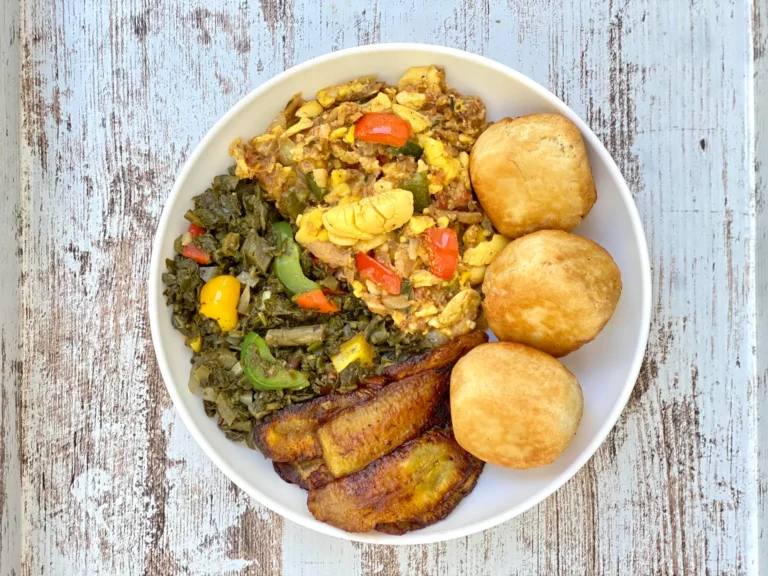
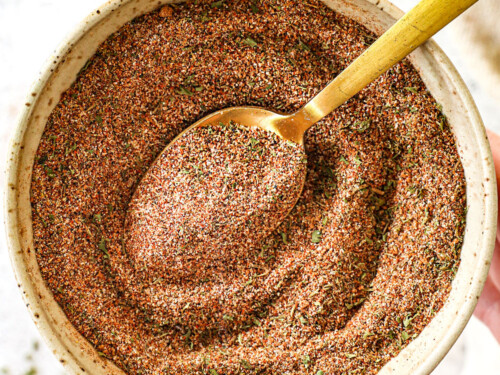
One Comment